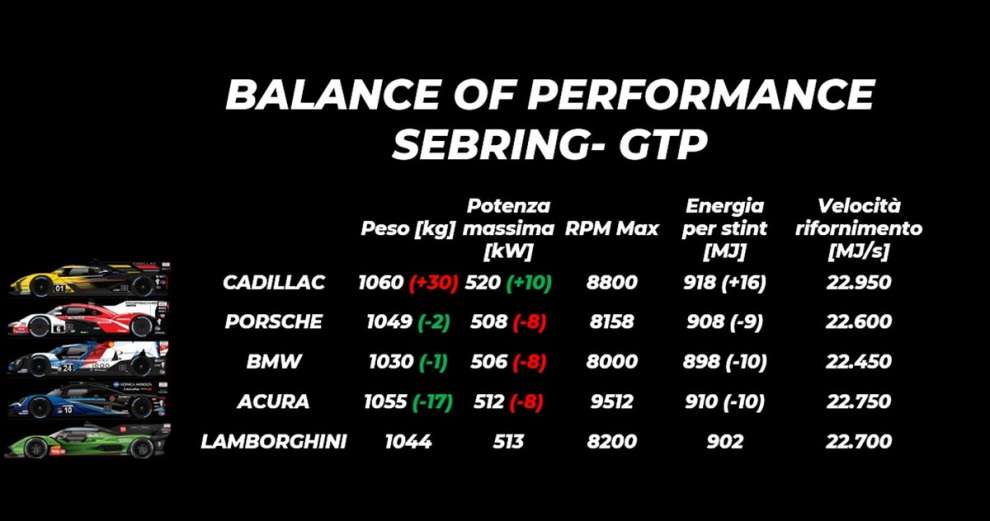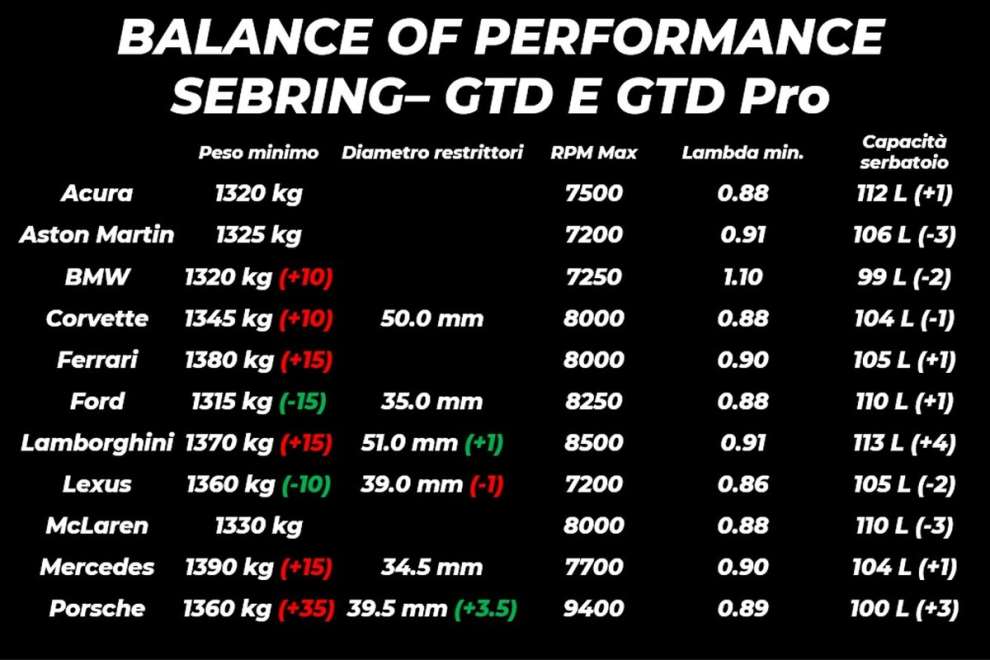By Carlo Platella
After the 24 Hours of Daytona, the IMSA championship returns to the track for another great endurance classic. Porsche, winner of the inaugural marathon in Florida and the opening stage of the WEC championship, also aims to impose itself in the famous 12 hours, a race which it will name also the American debut of Lamborghini's Hypercar. Great attention also in the GT classes. Ferrari and BMW were the great protagonists of the 24 Hours of Daytona, but the last few weeks have been accompanied by various controversies, leading to the organizers' about-turn on the Balance of Performance.
Respect the bumps
“Respect the bumps”, they say around Sebring, a circuit made famous by one of the most bumpy road surfaces in the world. A real survival test for the cars, as recalled by the saying according to which the stresses experienced in the 12 hours of Sebring are equivalent to those of a classic 24 hours. However, the dangers are not just for cars: the bumps are always around the corner outside the ideal trajectory, increasing the risks for drivers when lapping.
Beyond the asphalt, Sebring couldn't be a more different track than the one that hosted the opening round of the championship. The track is characterized by a tortuous design for medium-long distances, rewarding the traction qualities, the stability of the rear axle and agility in slow motion. Nothing to do with Daytona, where aerodynamic efficiency and stability during high-speed braking were what counted above all.
Balance of Performance: GTP
For the first time since the debut of the LMDh regulations, the IMSA championship welcomes a fifth manufacturer. At Sebring Lamborghinis it is credited with a minimum weight of 1044 kg and a maximum power of 513 kW, parameters calculated on the basis of the data collected in the Daytona tests last December. Andrea Caldarelli, Matteo Cairoli and Romain Grosjean will race free from particular pressures, aware of a still immature SC63 project, having started a year late from the competition. The goal is to reach the finish line to collect data useful for development, an ambitious but realistic goal, considering the absence of technical problems in the 1812 km of Qatar in the WEC.
The predictions for the fight for victory are for a rematch of the duel between Cadillac and Porsche which animated the inaugural 24 hours. The German 963 will race with 2 kg less than in Daytona, but also with a reduced peak power of 8 kW. General Motors' Dallara, on the other hand, will have to manage a radically different BoP from Daytona: in fact, there is an excess of 30 kg for Cadillac, compensated by 20 kW of more power. In this regard, for the first time the IMSA Balance of Performance presents important differences from that used in the WEC, but the anomalous nature of the Sebring track compared to traditional tracks must be considered.
After a Daytona run on defense, Edited hopes to return to fight for the top step of the podium. In the 12 hours the ARX-06 will be able to count on 17 kg less than in the first race of the year, which will also be accompanied by a reduction in power of 8 KW. The loss of power it experiences is similar BMWwhich keeps the minimum weight assigned to Daytona practically unchanged.

Balance of Performance: GTD and GTD Pro
The challenge at Daytona in the GTD Pro class saw him prevail the Ferrari 296 by Risi Competizione, long sought after by BMW. However, in the weeks following the race, IMSA revoked the points accumulated in the standings by the two manufacturers, claiming that the cars had exceeded expected performance. In fact, at Daytona a new approach for the Balance of Performance was tested, based on the performances estimated during agreed and controlled work programs carried out during the tests. The decision arises from the competitiveness expressed in the race by Ferrari and BMW, leading the organizers to believe that the two manufacturers had hidden their real potential during the tests for the BoP resolution.

IMSA thus returns to a more traditional method for the 12 Hours of Sebring, calculating the BoP based on data collected in previous races. BMW faces an increase in the minimum weight of 10 kg compared to Daytona, while Ferrari has an extra 15 kg, on a par with Lamborghini. On the other hand, Ford and Lexus are down, having lightened by 15 and 10 kg respectively. What has changed, however, is above all the parameters for Porsche, weighed down by another 35 kg, but also supported by the increase in power guaranteed by the enlargement of the engine's intake ducts. The hope is to see a race free from the controversies over the BoP, which are all too recurrent at the start of the season for endurance racing.
#Hours #Sebring #BoP #Lamborghini39s #debut